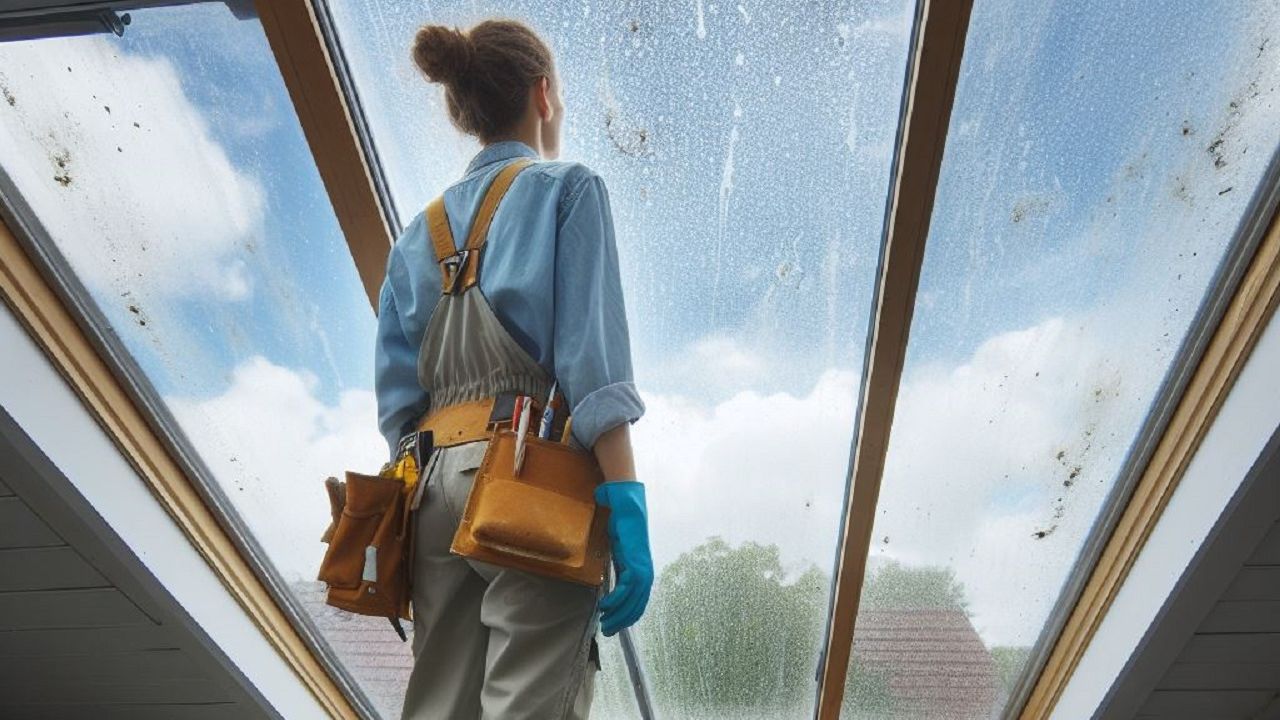
If you’re hesitant about replacing a skylight without replacing the entire roof, rest assured that it can be done successfully. The key lies in understanding the condition of your roof and skylight. However, before you take the plunge, there are important considerations to ponder. How can you guarantee a seamless replacement and avoid potential pitfalls? Let’s delve into the intricacies of this process and illuminate the best path forward for your home.
Skylight Replacement Vs. Roof Replacement
When assessing whether to replace a skylight or the entire roof, it’s vital to evaluate the condition of both elements to determine the most cost-effective and practical solution. Skylights play a significant role in providing natural light, ventilation, and aesthetic appeal to your space. If your skylight shows signs of wear and tear such as leaks, cracks, or fogging between panes, replacing it might be the best option. By addressing skylight issues promptly, you can prevent further damage to your roof and interior.
In some cases, replacing just the skylight can be more affordable and efficient than replacing the entire roof. If your roof is relatively new and in good condition, focusing on replacing the skylight can save you time and money. However, suppose your roof is aging or experiencing multiple problems. In that case, it might be more practical to consider a full roof replacement to ensure your home’s long-term health and stability. Ultimately, the decision between skylight and roof replacement should be based on a thorough evaluation of the condition of both components to find the best way forward.
Factors to Consider Before Replacing
To begin with, before deciding to replace either the skylight or the roof, thoroughly evaluate certain factors to guarantee the most suitable solution for your home. Firstly, consider the age and condition of both the skylight and the roof. If the skylight is old and showing signs of wear, but the roof is relatively new, replacing just the skylight might be the best option. Conversely, if the roof is nearing the end of its lifespan, replacing both the skylight and the roof might be more cost-effective to avoid future issues.
Secondly, the reason for the replacement must be assessed. Is it due to leaks, energy inefficiency, or simply aesthetic reasons? Understanding the root cause can help you decide whether to replace just the skylight or if a roof replacement is also necessary.
Lastly, consider your budget and long-term goals for your home. While replacing just the skylight may seem cheaper initially, investing in a new roof and the skylight replacement could save you money in the long run by preventing future problems.

Steps to Replace a Skylight
To successfully replace a skylight, it’s important to follow a systematic process that guarantees proper installation and avoids potential future issues.
First, start by carefully removing the existing skylight. Use caution to prevent any damage to the surrounding roof area. Once the old skylight is out, inspect the opening for any signs of damage or wear that may need repairs before installing the new skylight.
Next, make sure that the new skylight matches the dimensions of the previous one. Proper measurements are essential to prevent leaks or structural issues. Before placing the new skylight, apply a generous amount of sealant around the frame to create a watertight seal. Ensure that the skylight is level and properly aligned before securing it.
Cost Comparison: Skylight Vs. Roof
Comparing the costs of installing a skylight versus replacing an entire roof can help you make a well-informed decision for your home improvement project. Installing a skylight typically ranges from $1,500 to $3,500 for a standard fixed unit, while a vented skylight can cost between $2,000 to $4,000, including labor.
On the other hand, replacing a roof is a significantly larger investment, with costs varying widely depending on the size of your home, the materials used, and labor expenses. A basic asphalt shingle roof replacement can start at around $5,000 but may go up to $10,000 or more for larger homes or premium materials like metal or tile.
When considering whether to install a skylight or replace your roof, it’s essential to consider the long-term benefits and costs. While a skylight can improve natural light and aesthetics, a new roof provides essential protection for your entire home. Ultimately, the decision should align with your budget, aesthetic preferences, and the overall condition of your current roof and skylight.
Maintenance Tips After Replacement
After replacing your skylight or roof, guaranteeing proper maintenance is key to prolonging their lifespan and preventing potential issues. Regularly inspect the seals around the skylight to check for any signs of wear or damage. Clean the skylight using a mild soap and water solution to prevent dirt and debris buildup that can lead to leaks.
Trim any overhanging branches that could scrape against the skylight during windy conditions. Ensure the flashing around the skylight is secure and free of rust or corrosion. Additionally, keep gutters clear to prevent water from pooling around the skylight or roof, which can cause water damage.
Monitor the interior of your home for any signs of water stains or leaks near the skylight and address them promptly. By following these maintenance tips, you can help extend the lifespan of your skylight and roof while enjoying the benefits of natural light in your home.
Frequently Asked Questions
Can a Skylight Upgrade Increase Energy Efficiency?
By upgrading your skylight, you can improve energy efficiency. Newer models offer enhanced insulation and UV protection. This can decrease heat loss in winter and heat gain in summer, leading to potential energy savings and a more comfortable environment.
What Are the Common Sizes for Skylight Replacements?
Common sizes for skylight replacements vary but often include 2×4 feet, 2×3 feet, and 2×2 feet. Measure your existing skylight carefully to guarantee a proper fit for replacement. Consulting a professional for guidance is recommended.
Is It Possible to Add Blinds or Shades to a Skylight?
Want to elevate the look of a skylight? Yes, you can! Elevate your space with style and functionality. Choose from various options to control light and privacy. Enjoy the freedom to customize your skylight experience.
Are There Tax Incentives for Skylight Replacements?
You may be eligible for tax incentives when replacing skylights. Consult with a tax professional to investigate potential savings. Look into federal, state, or local programs that could offer financial benefits for upgrading your skylight.
How Long Does a Skylight Replacement Typically Last?
Typically, a skylight replacement can last 10 to 20 years, depending on factors like the quality of materials used and proper installation. Proper maintenance can help extend its lifespan.